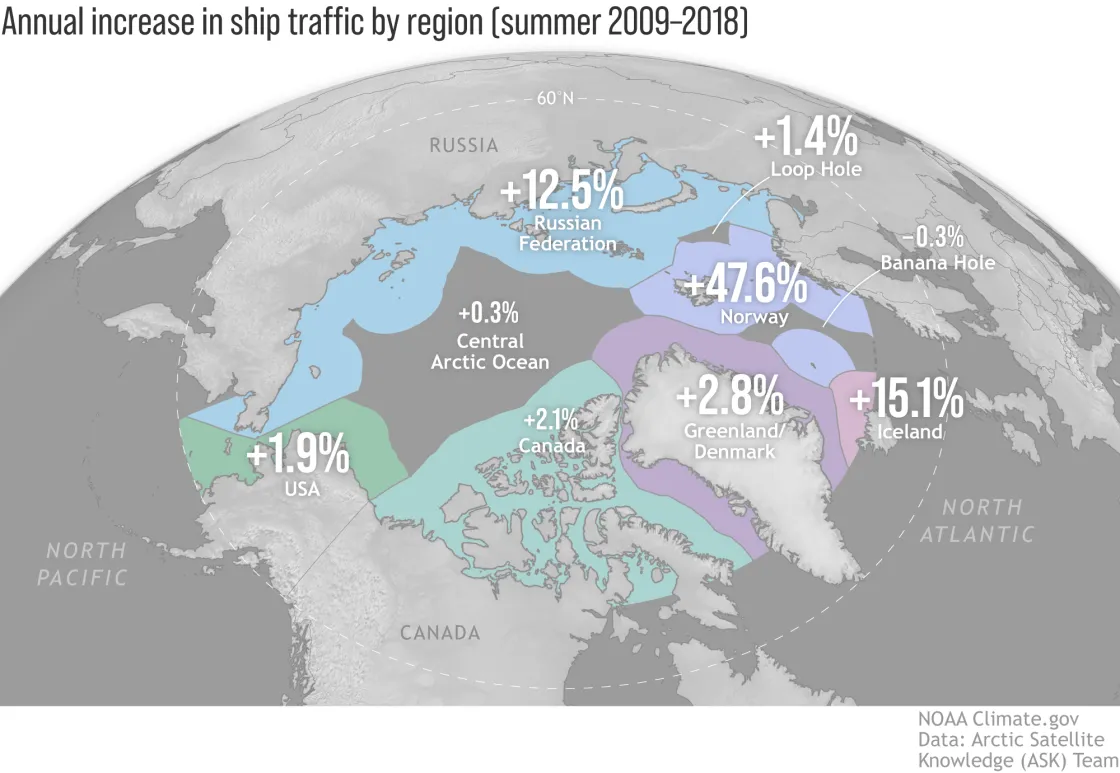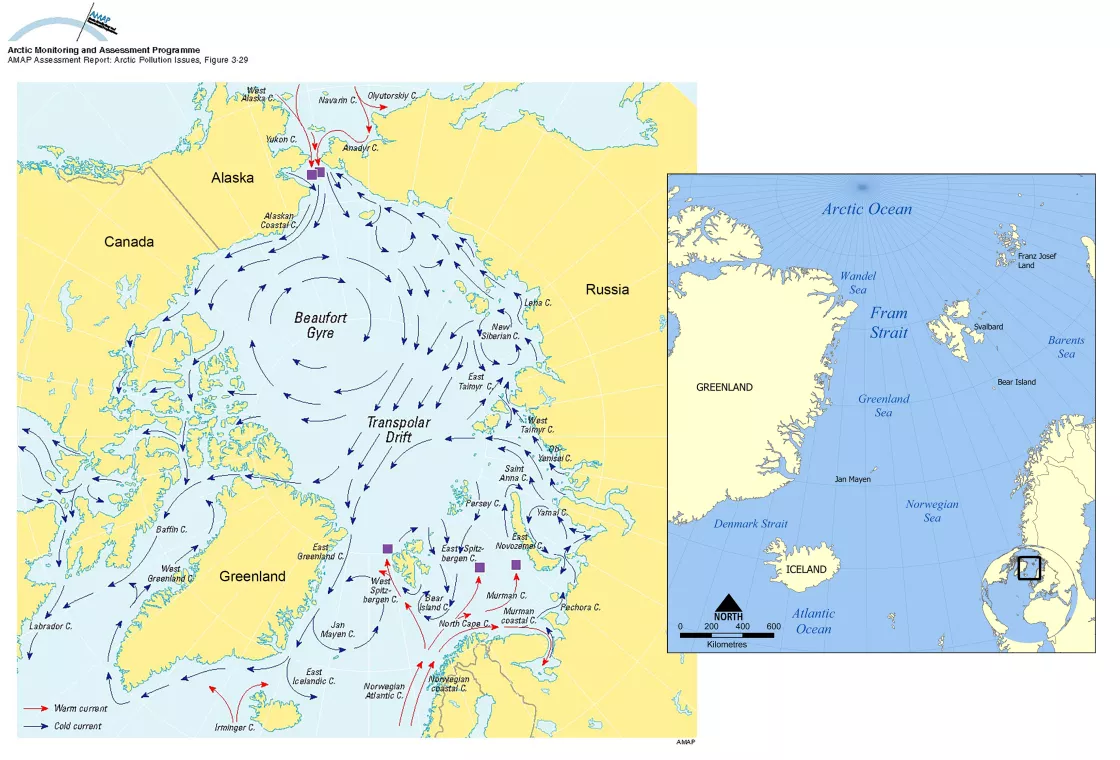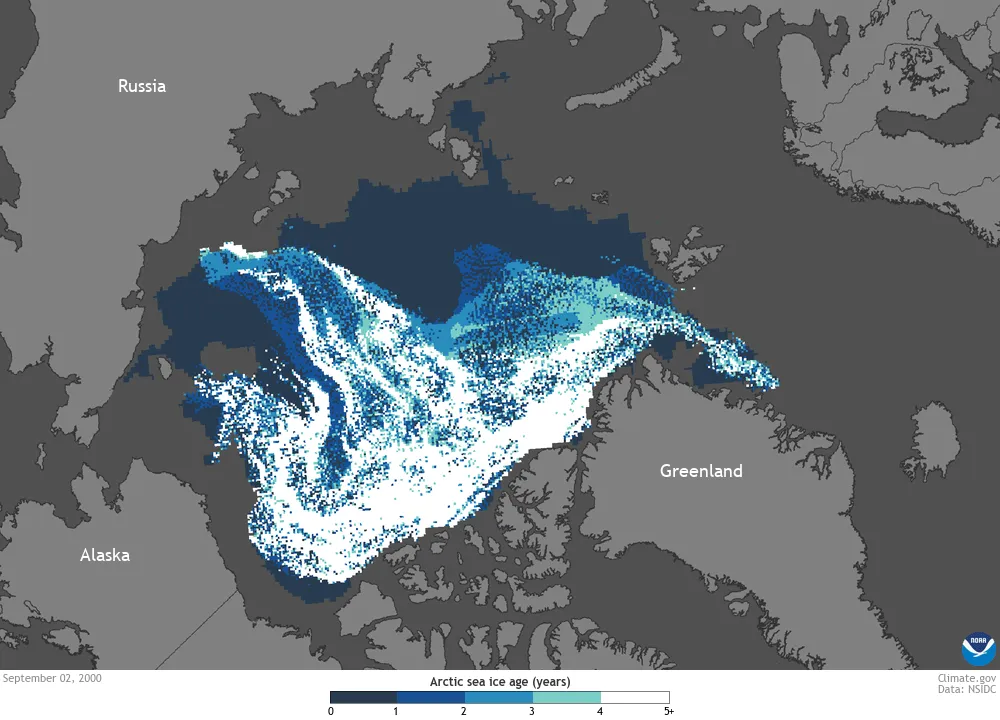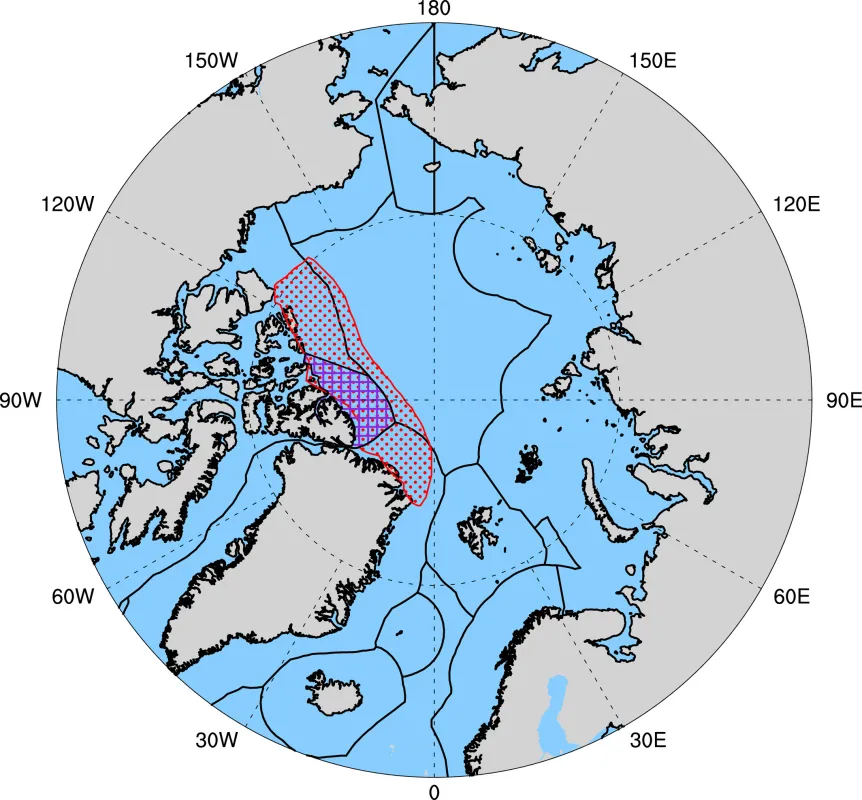By Michon Scott
Arctic sea ice has declined steadily over the course of the satellite record, linked to warming climate driven by human activities. Researchers debate when the Arctic Ocean will likely experience its first “ice-free" summer, some arguing the event may happen sooner than projected by climate models, others arguing it might happen later than many climate projections. Still, most researchers agree that the timing cannot be precisely predicted.
Timing aside, what do researchers mean when they discuss an ice-free Arctic? They do not mean an ocean entirely devoid of ice, and they certainly do not mean an Arctic in which Greenland has lost its massive ice sheet. The term “ice-free” is based on a threshold for sea ice extent: the area of ocean with at least 15 percent sea ice concentration. A consensus has emerged among scientists that the Arctic Ocean is effectively ice free when its sea ice extent falls below 1 million square kilometers (390,000 square miles).
Why “ice-free” in the Arctic does not necessarily mean ice free
The Arctic Ocean is unlikely to lose the entirety of its sea ice in the coming decades, even at the end of summer in a warming climate. Just as pockets of mountain snow cover can linger through the warmest months, remnants of ice are likely to remain in some parts of the Arctic Ocean. Climate scientists and sea ice researchers instead try to project conditions that are nearly ice free.
The often-used definition—less than 1 million square kilometers (390,000 square miles)—might sound like a lot of ice to be considered nearly ice free, but from 1981 to 2010, the average summer minimum exceeded 6 million square kilometers (2.3 million square miles). For comparison, the 1981 to 2010 average sea ice extent was roughly four times the area of Alaska, or six times the area of Egypt. The sea ice extent in a practically ice-free Arctic would equal just two-thirds the area of Alaska, or about the area of Egypt. Such conditions would mean an 82 percent reduction from the long-term average.
Sea ice extent below 1 million square kilometers would leave most Arctic waterways open, with remaining sea ice mostly clinging to a portion of the Arctic’s coastlines. Sparse sea ice would remain under conditions designated as ice free, but that ice would persist mostly in hidden pockets of the Arctic Ocean. In most of the Arctic Ocean, sea ice would be rarely encountered and insignificant, especially when compared to the 1981 to 2010 average.
Although scientists cannot say exactly when the Arctic is likely to become effectively ice free, they can predict where Arctic sea ice will probably last the longest.
Deriving sea ice age from its travel history
Sea ice forms in the oceans of the polar regions, where some of our planet’s coldest conditions occur, often accompanied by months of winter darkness. Cold and dark conditions are not the only factors affecting Arctic sea ice location, though. Ocean currents and winds drive ice movement. Sea ice travels continually through the Arctic Ocean, some of it forming the Beaufort Gyre, some of it exiting the region through the Fram Strait.
The fate of newly formed sea ice depends heavily on where ocean currents carry it. It may melt shortly after forming if transported to a warm enough location. It may persist for months or longer if carried to a sufficiently cold place, especially if ocean currents pile up the ice against an obstacle, such as more ice, or a coastline.
While newly formed sea ice is paper thin, sea ice that survives multiple summers may grow as thick as a one-story house. Over time, old ice also loses its salt content, raising its resistance to melt. Consequently, sea ice age is an excellent proxy for sea ice thickness, and sea ice thickness is a reasonably good predictor of where sea ice may persist the longest.
NSIDC provides estimates of sea ice age based on sea ice movement over time. The NASA National Snow and Ice Data Center Distributed Active Archive Center, or NSIDC DAAC, archives the Quicklook Arctic Weekly EASE-Grid Sea Ice Age data set, which is derived from the Quicklook Arctic Weekly EASE-Grid Sea Ice Motion Vectors data set.
The Last Ice Area
The area where Arctic sea ice is likely to persist has been designated as the Last Ice Area. Part of the area falls within the Tuvaijuittuq Marine Protected Area.
In short, when researchers talk about an “ice-free Arctic,” they are talking about the Arctic Ocean containing less than 1 million square kilometers (390,000 square miles) of sea ice extent, with most of that ice persisting along the northern edges of Canada and Greenland.
References
Newton, R., S. Pfirman, L.B. Tremblay, and P. DeRepentigny. 2021. Defining the “ice shed” of the Arctic Ocean’s Last Ice Area and its future evolution. Earth’s Future 9(9): e2021EF001988. https://doi.org/10.1029/2021EF001988.
Overland, J.E., and M. Wang. 2013. When will the summer Arctic be nearly sea ice free? Geophysical Research Letters 40(10: 2097-2101. https://doi.org/10.1002/grl.50316.




